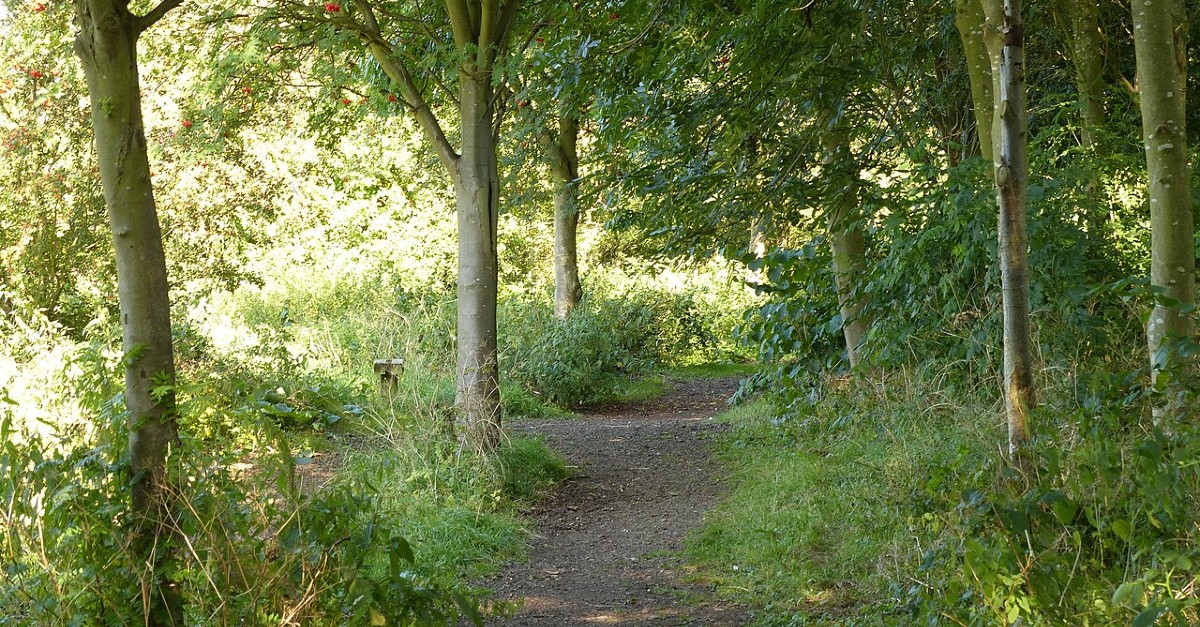Believe me, you will find more lessons in the woods than in books. Trees and stones will teach you what you cannot learn from masters. – St. Bernard of Clairvaux
I was fortunate enough to spend this 4th of July at a small cabin with my family. The cabin was seated near a small lake and surrounded by walking trails. It was the perfect place for a quiet getaway, and I was very much looking forward to a quiet holiday weekend where I could rest, relax, and reflect on the coming year. Then I remembered my niece and nephews were also in attendance.
Those of you with children know they are not much for quiet contemplation. They wanted to get out and explore, and that’s precisely what they did. One nephew took to collecting frogs while another went searching for cool rocks. My niece wanted to learn about the different birds visiting our feeders, while the youngest became fascinated with the wildflowers surrounding the house. And with these activities came questions, questions, questions!
Nature’s Classroom
In many ways, our family vacation became one great learning opportunity. We learned about the life stages of a frog, and the difference between reptiles and amphibians. We discovered that a hummingbird’s heart beats 1,260 times per minute, and that they help pollinate wildflowers. Also, rocks can be shaped by running water. All this from an afternoon’s observations and wonderings.
I think we as educators underestimate how useful nature is at teaching STEM. We’re so used to instructing students within our classrooms that we forget the woods and rivers have their own lessons to share. Now that COIVID-19 has radically altered the way we teach, it might be time for our students to explore the great outdoors. But where do we begin, and how do we keep our students focused on the task at hand? With help from Edutopia, here are a few methods for navigating STEM in nature!
Into the Wild
- Choose a Habitat: Take students to a nature trail and have them explore a habitat that appeals to their nature (no pun intended). Nearby parks often have many to choose from: ponds, meadows, trees, etc. Once they’ve made their decision, have them observe the habitats and write down their observations. What animals did they see? What did they notice about the plant life? How much sunlight does this area receive?
- Brainstorm Questions: Once they have their observations, encourage them to share their thoughts and wonderings. Don’t worry if these questions veer off topic either. Writing for Edutopia, Koshi Dhingra states, “It is important to model and discuss brainstorming so that they are free to ask questions without worrying about how they are connected to math, science, or STEM.”
- Share the Awesome: Have students expound upon their questions through project-based learning. If you want to teach students the value of conservation, consider having them investigate whether the plants and animals they saw are native to their home state. On the other hand, you could also have them record their questions in a letter and share them with a senior friend. The possibilities are endless!
Time for Some Fresh Air
Classrooms may change, but nature is the timeless educator. The world of STEM is all around us, brimming with both creativity and practical knowledge. A walk through the woods might just give students the comfort and experience they need in the new semester. Just remember to tap into their innate wonder and give them the opportunity to observe, question, and marvel!
We hope you are all staying healthy and safe during this difficult time. For more free educational resources, or ideas on how to promote healthy Social-Emotional Learning, simply follow this link!
*Image courtesy of wikimedia commons.

